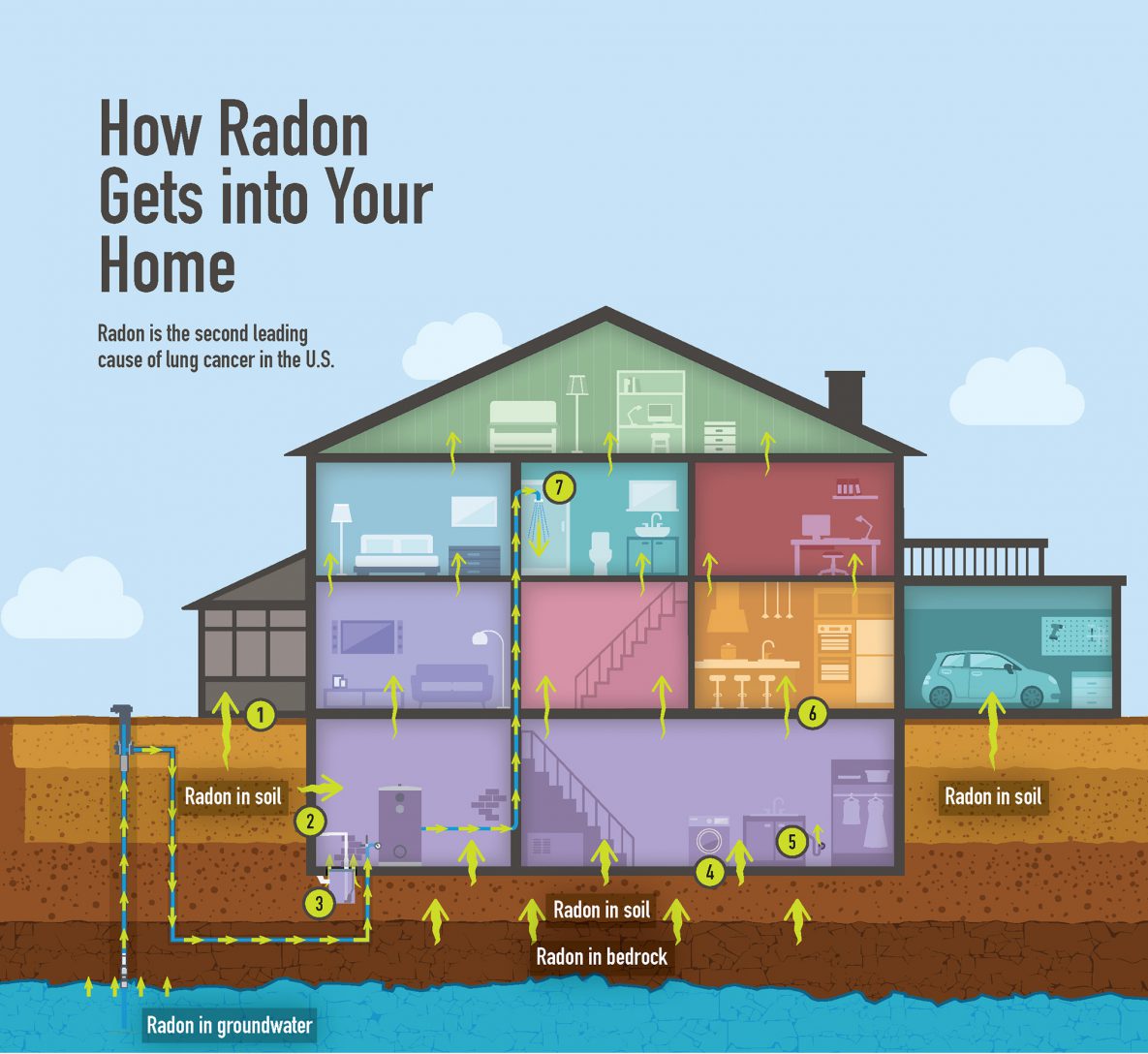What is Radon?
Radon is a colorless, odorless radioactive gas that is found in soils in Colorado that can make its way into homes and buildings. Since radon can cause cancer, all Coloradans are encouraged to test for radon and install mitigation systems when radon levels are above the recommended levels.

How Radon Gets into Your Home
- Construction joints
- Cracks and cavities inside walls
- Sump pump
- Cracks in solid floors
- Gaps around service pipes
- Gaps in suspended floors
- Private wells and groundwater supplies
Why test for Radon?
Radon is the leading cause of lung cancer among non-smokers in the United States and is responsible for approximately 500 lung cancer deaths annually in Colorado, but many people don’t know about radon or the risks it can pose to their health.
- In Colorado, we have high levels of radon in our soils. Data collected on indoor air radon levels indicates that most counties in Colorado have average levels higher than 4 picocuries per liter (pCi/L), which is the level at which the EPA recommends radon mitigation.
- Scientists are more certain about radon risks than risks from most other cancer-causing substances.
- Smoking combined with radon is an especially serious health risk. Stop smoking and lower your radon level to reduce your lung cancer risk.
- Testing is easy and should only take a few minutes of your time.
Free Radon Testing Kits
Pueblo Department of Public Health and Environment (PDPHE) is offering a limited number of free radon testing kits.
Test kits will have a unique number assigned to them, for tracking purposes the following contact information will need to be shared with PDPHE:
- Name
- Address
- Phone or email
If you are a resident of Colorado, free radon test kits are available from Colorado Department of Public Health and Environment. Limit one per household. CDPHE also offers Low-income radon mitigation assistance.
Mitigation
Radon reduction systems work, and they are not too costly. Some radon reduction systems can reduce radon levels in your home by up to 99%. Even very high levels can be reduced to acceptable levels.
There are several proven methods to reduce radon in your home, but the one primarily used is a vent pipe system and fan, which pulls radon from beneath the house and vents it to the outside. This system, known as a soil suction radon reduction system, does not require major changes to your home. Sealing foundation cracks and other openings makes this kind of system more effective and cost-efficient. Similar systems can also be installed in houses with crawl spaces. Radon contractors can use other methods that may also work in your home. The right system depends on the design of your home and other factors.
Find a radon contractor
Certified Radon Measurement and Mitigation Contractors
- National Radon Proficiency Program certified contractors.
- National Radon Safety Board certified contractors.
All contractors conducting radon measurement and/or mitigation in Colorado must be licensed by the Colorado Department of Regulatory Agencies (DORA). Verify that the certified contractor you have selected is licensed by DORA.
Contact
For more info email [email protected] or call 719-583-4333
